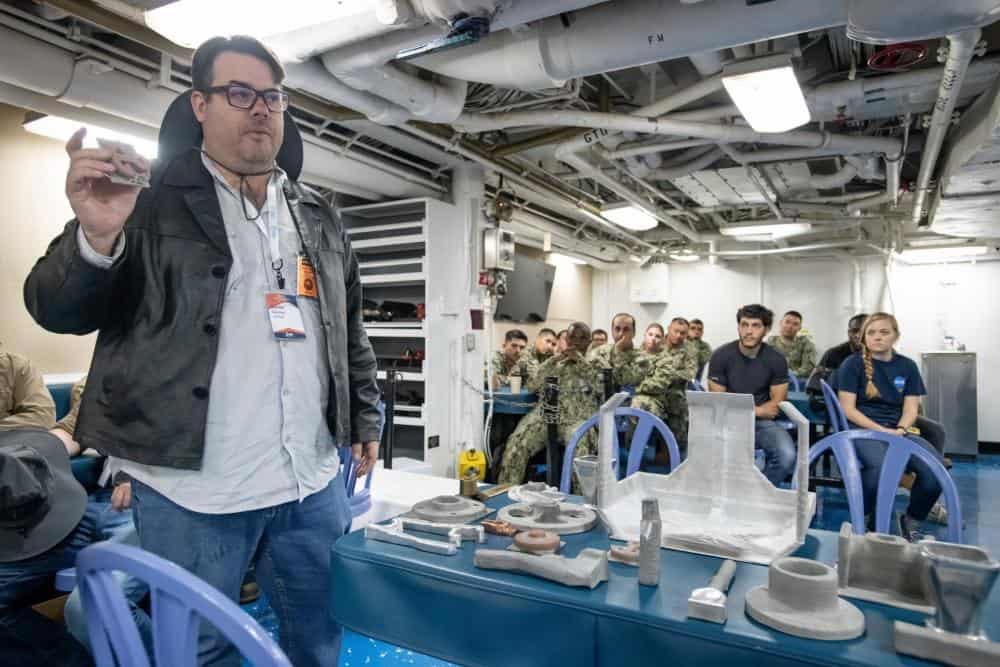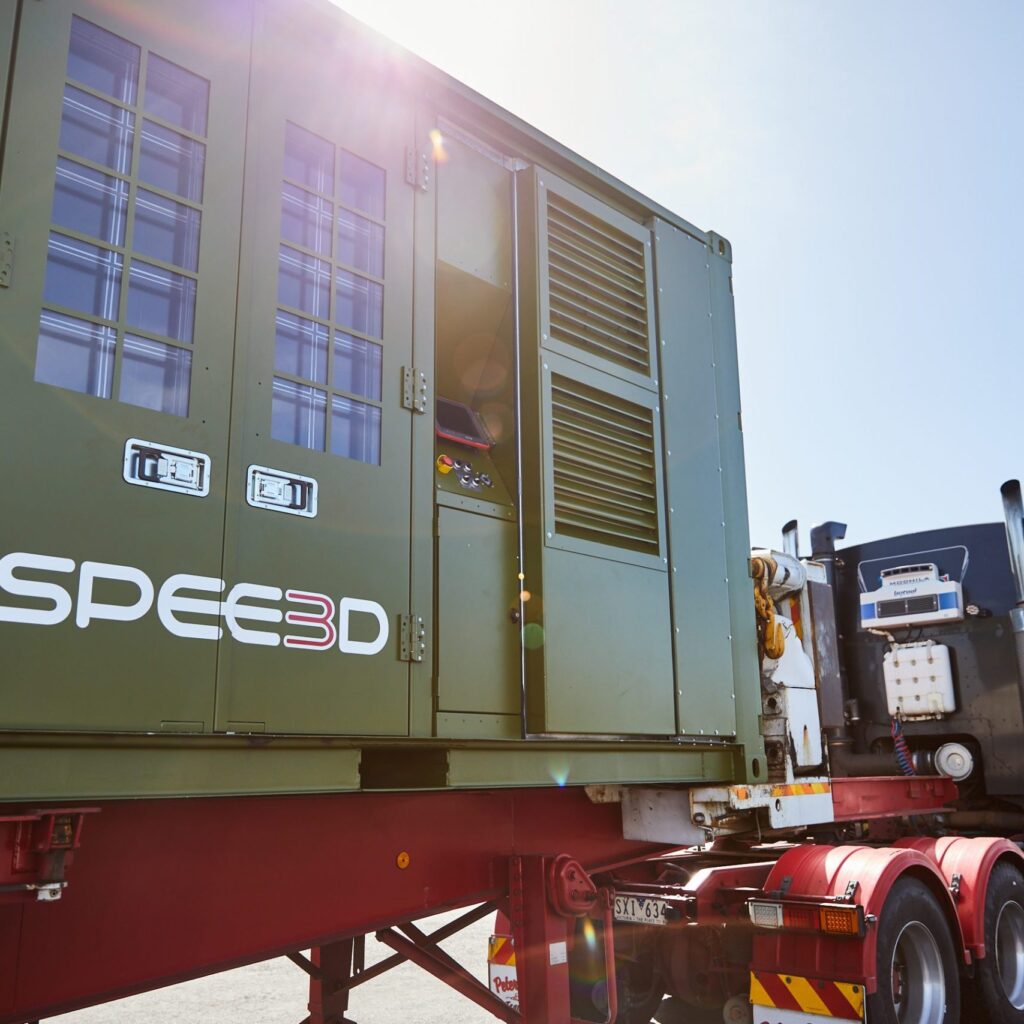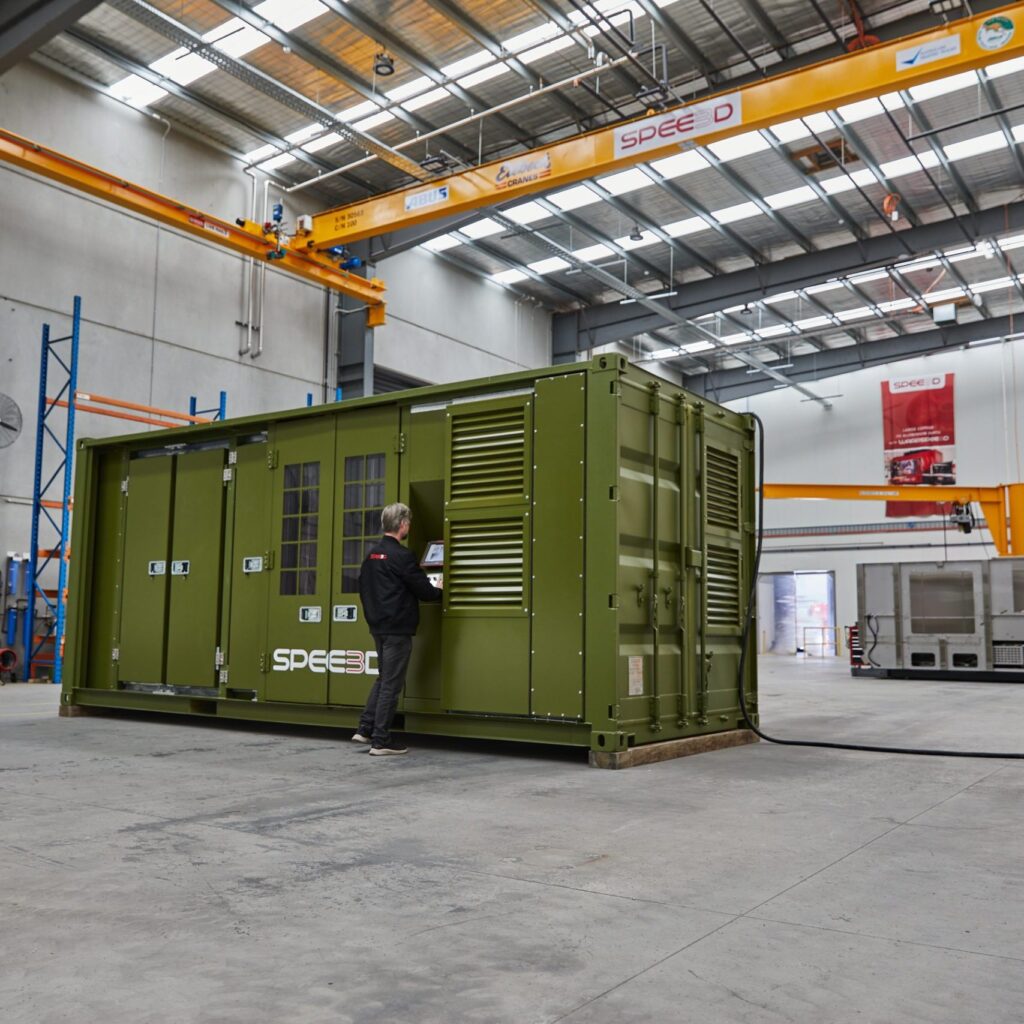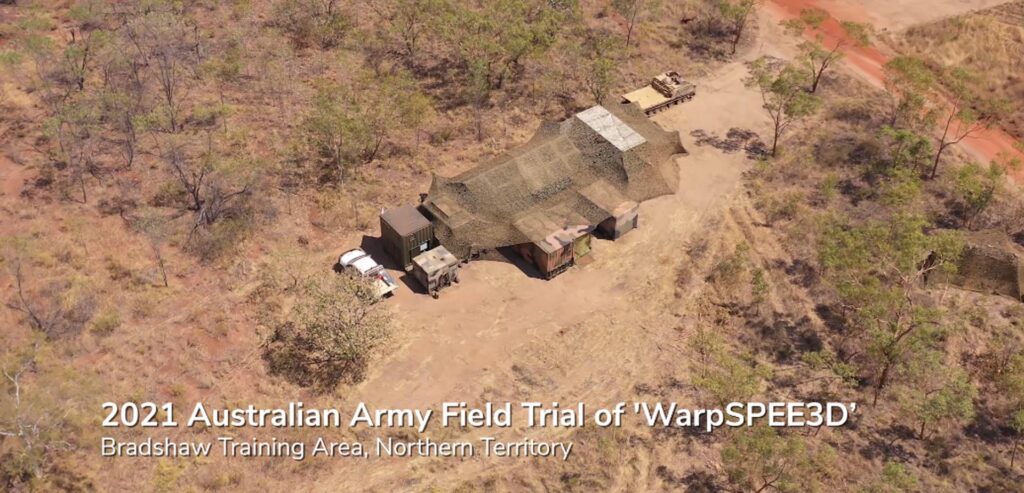When writing about emerging companies, especially in tech-heavy spaces, it’s always tempting to try to use Apple as a frame of reference. I try to fight that temptation in terms of what actually gets published — mostly because it feels like lazy writing — but I’ll admit I still can’t help but play with that juxtaposition in my head.
This point/counterpoint recently occurred to me again when I interviewed Steven Camilleri, CTO of SPEE3D, the Australian original equipment manufacturer (OEM) of metal cold spray additive manufacturing (AM) platforms. In fact, one of the other times I remember it occurring to me most strikingly is when I interviewed the company’s CEO, Byron Kennedy, in November, 2022.
First, let’s get this out of the way: I don’t think SPEE3D is anything like Apple. (No company really is, which is another thing I find interesting about the compulsion to make such comparisons.) But I do think there is something to be said about the parallel that I couldn’t get out of my head, between Jobs/Wozniak and Kennedy/Camilleri.
If only because it’s so much to live up to, I’m sure the folks at SPEE3D will be among those cringing at this analogy. Additionally, despite its marketing prowess and the slick packaging of its products, SPEE3D is not a boastful or self-congratulatory organization. Quite the opposite—the success it has achieved thus far is due to what is very much a head-down, grind-it-out mentality.

Nevertheless, whatever later tensions may have existed between them, Jobs and Wozniak’s initial success at running a company they co-founded as a duo was certainly one of the key factors setting Apple up for long-term success. It’s not easy for any organization to be run smoothly with more than one person at the helm, so when that happens and it seems to be working well, it catches your attention.
This is not to say either one of them, Kennedy or Camilleri, is more Jobsy or Wozniaky than the other. Obviously, since Kennedy is more explicitly concerned day-to-day with the primarily business end and Camilleri more with the purely tech side of things, the natural impulse is to think Kennedy/Jobs, Camilleri/Wozniak.
But the strength inherent in SPEE3D’s being led by its two co-founders might lie precisely in the versatility of both individuals: Byron wholly understands the tech, and Steven fully grasps the business. The success of the working relationship probably has more than a little bit to do with the fact that this is their second startup together. Previously, in the early 2000s, the two founded In Motion Technologies, an electric motor brand that was a spin-off of their work on the World Solar Challenge at Charles Darwin University.

SPEE3D’s ruggedized, XSPEE3D platform
“This is our second startup as you know, so there’s probably an element of co-CEOs going on here,” Camilleri told me, “and we do substitute for each other a lot. Byron is much more motivated to think about the business stuff and engage in the business stuff, and I’m much more motivated to think about technology and engage in the technology, but you kind of have these superpowers as founders to just cut across a range of things in the organization. So, if you’ve got an organization that’s got some people like that right at the top, who can cut across and are correctly oriented and correctly motivated, I think that can be very powerful. And that’s one of the reasons why I think being a founder is this interesting responsibility, because you can achieve a lot of different things without people really pushing back too hard.”

The relationship between an underlying technology and that technology’s overarching packaging takes on the greatest significance, perhaps, at the beginning of a sector’s broad commercialization. This is the juncture at which the greatest proportion of a customer base requires the greatest amount of educating from the companies involved. Buyers know enough to know that they’re at least partially responsible for verifying that the product works — there isn’t a broader marketplace yet to do the weeding out for them — but also don’t know enough yet to simply figure that out for themselves.
This is not only one of the main reasons why it’s so important for a company to get the timing right in its move from R&D to commercialization, but also does much to help explain the need for synergy between the business and technology sides of an operation:
“Something that a lot of people get wrong is, the idea alone for a business doesn’t have a lot of value, in reality. Once you’ve proven the idea actually does something, once you’ve proven that the technology exists, then you’ve got a little value. But even then, all the real value is still yet to come, from all the business of commercializing it, figuring out who the market is, the strategy for getting it to market, etc. The guy who wrote the book on disruptive innovation — he coined the term — Clayton Christensen, had one of my favorite quotes: ‘The problem of any disruptive technology is not a technological one, but a marketing one.’ Just imagine all the stuff that’s latent, sitting around in society right now, that could be incredibly valuable. But because the people that have it are no good at marketing it, it doesn’t happen.”
Camilleri then explained how this ties in directly to the current phase of the AM sector, and into SPEE3D’s trajectory:

“It takes a lot of people thinking about what you use it for and what actually needs to be better about it. I think AM is in that space about now, where we’ve got these platforms that can kind of be brought to use, but you’ve got to train people up, you’ve got to provide this kit. I don’t think product launches, particularly, make the transformation happen. What you need is that critical moment where there’s enough people that need what you have and understand what it can do for them, and there’s enough evidence supporting that — you hit that point in the curve where people start to adopt it properly and use it properly. And we’re just at that point now with AM. That critical mass, that critical breaking point — which I think is this year for us — has been a result of enough people understanding what the technology can do, and seeing that other people are having success with it along similar lines.”
Above all, the types of broader AM successes that are making customers notice SPEE3D are in large-scale, high-value parts for heavy industry — not a realm that has traditionally been so amenable to the AM sector. That Camilleri has always been confident in the technology’s ability to eventually draw interest from those markets is a major reason why SPEE3D now finds itself in the right place at the right time:
“AM will inevitably be ubiquitous because the idea of being able to produce things one at a time efficiently — which is what AM is really for — is so much better than producing billions of them one place on the planet and then shipping them everywhere else. You build your car in your hometown and you don’t have to ship it across the world. That’s better. You customize your car to put the amount of seats in it that there are people in your family. That’s better! AM offers these things. If we can make one car with AM for the same cost that would otherwise require making a million cars, everyone’s going to go that way, because it’s just a better choice. So I think we’re just going to keep incrementally improving the technology, and I’m trying to provoke great leaps.”

This is more or less what I find so intriguing about SPEE3D: the guys running the show really get the strategic economic advantages of AM in general, and metal AM in particular. The company has taken a very difficult concept, producing large metal parts profitably at the point of need on a small scale, and never taken its eyes off of that prize. That’s why SPEE3D has drawn so much attention from the defense market, and why I think it has considerable potential to diversify into other areas:
“If you can take this technology out into the desert, or an island, or a jungle or what have you, and make vehicle parts that work well enough to get the vehicle operational again, that’s not a technology that’s only useful to defense. Defense will test it like crazy and generate that data that you need, to be able to market it to other people. But I mean, think of a mining site. It’s basically the same application. Think about a giant farm. It’s the same application. Farmers might have three days in a year to harvest, and they might have one of their harvesters go down, or if they’ve just unpacked it from mothballing and it’s showing an error on a sensor and it’s going to be three days to fix, they don’t earn that year. It’s a huge amount of pressure. So they’re not in the kind of existential pressure that the army would be in, but it’s right up there. The application’s exactly the same.”
I think that this urge to extrapolate out from the individual to the general and then zoom back in again is, interestingly enough, also what accounts for my inclination to look for frames of reference like the Apple one. It is not really about Apple, or Jobs and Wozniak, but rather about looking at something that obviously works, and trying to find the invisible intangible patterns that can help explain why it does. That is, even amidst all the infinite, worthwhile ideas out there that sit around and do nothing, there are still some that, almost inexplicably, manage to actually do something.
Apple was a well-established, hugely successful company for quite a long time, without still being what we know it as today. The conditions had to be just so for that to happen. A sound technological concept will be, in only a shockingly small number of cases, a sound business proposal, and even when it is, imagination can’t break into reality without the right stewards ushering it forward. Every once in awhile, though, all of the pieces do come together in the intended way, the people responsible for those pieces have stuck around to see the final result through, and both things happen at a time when the world is ready for it.
Unless otherwise noted, images courtesy of SPEE3D
Subscribe to Our Email Newsletter
Stay up-to-date on all the latest news from the 3D printing industry and receive information and offers from third party vendors.
You May Also Like
Further Understanding of 3D Printing Design at ADDITIV Design World
ADDITIV is back once again! This time, the virtual platform for additive manufacturing will be holding the first-ever edition of ADDITIV Design World on May 23rd from 9:00 AM –...
3D Printer Maker EVO-tech Reborn as NEVO3D — Once More With Feeling
EVO-tech was a 3D printing service and original equipment manufacturer established in 2013 and based in Schörfling am Attersee, Austria. The company produced high-quality material extrusion systems featuring linear bearings,...
3D Systems Brings 3D Printed PEEK Cranial Implant to the U.S. with FDA Clearance
For more than 10 years, 3D Systems (NYSE:DDD) has worked hand-in-hand with surgeons to plan over 150,000 patient-specific cases, and develop more than two million instruments and implants from its...
CDFAM Returns to Berlin for Second Annual Symposium
The second CDFAM Computational Design Symposium is scheduled for May 7-8, 2024, in Berlin, and will convene leading experts in computational design across all scales. Building upon the first event...































